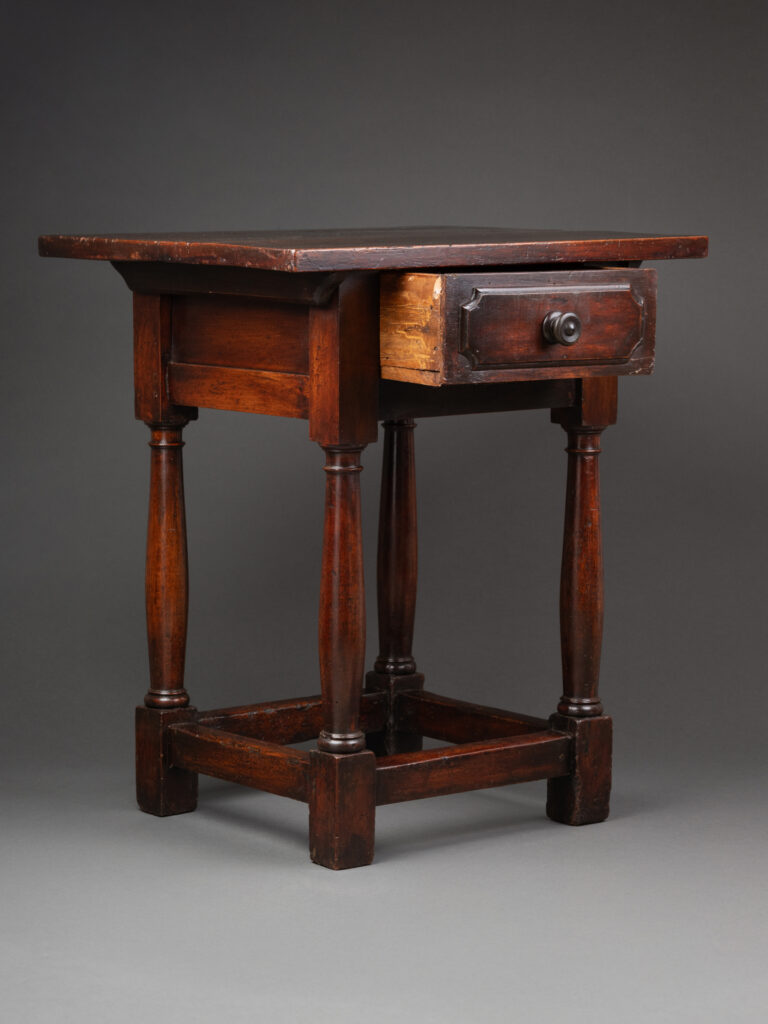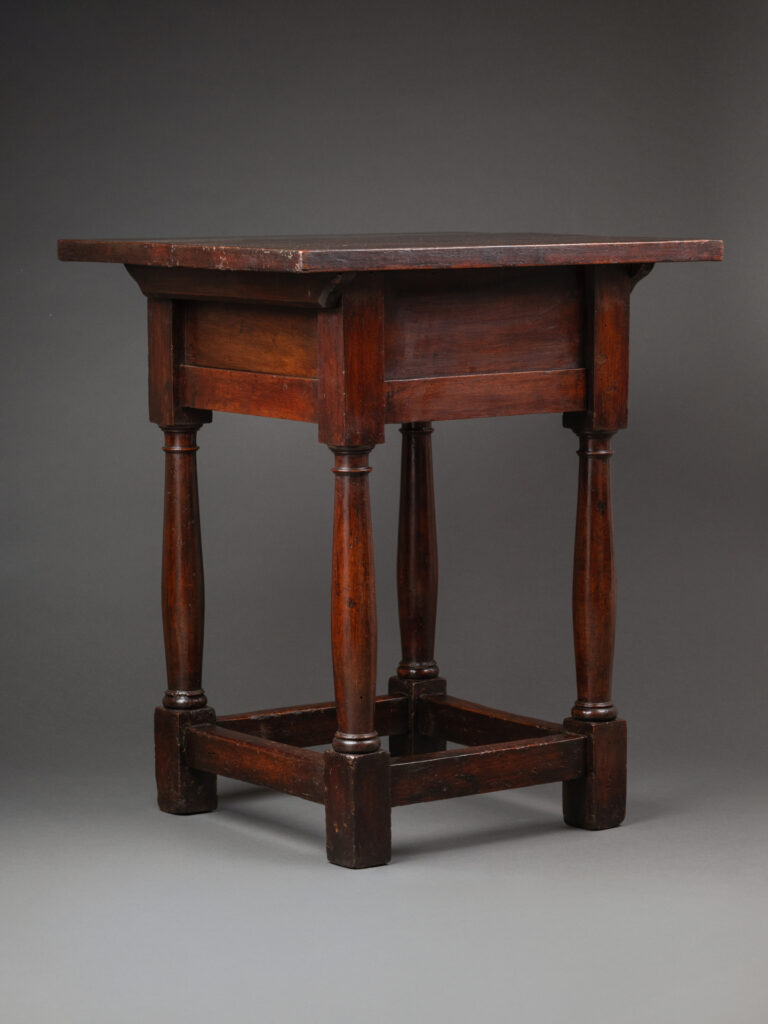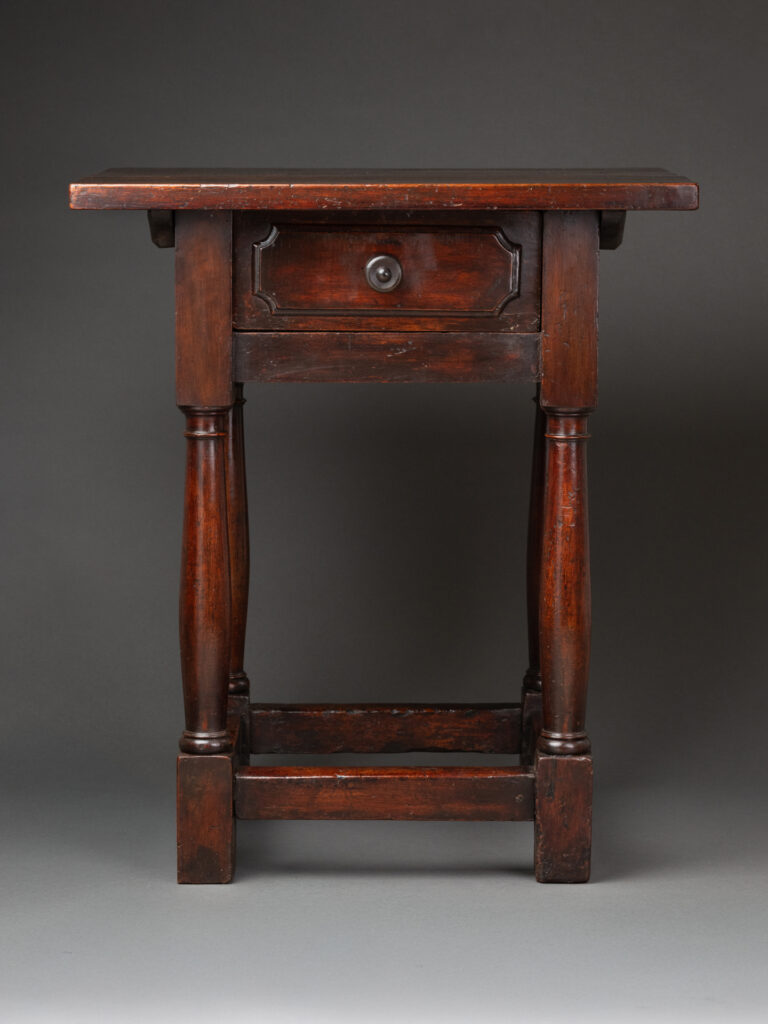This elegant walnut table, made inTuscany during the 16th century, bears witness to the refinement of Italian Renaissance furniture. Square in shape, it rests on four columns, themselves supported by connecting dice. A low strut connects the legs, ensuring structural balance. A discreet drawer is integrated into the waistband, a common functional feature of Italian tables from this period.
The use of walnut, a noble wood prized in Italy for its solidity and rich grain, underlines the care given to this everyday yet precious piece. Its warm, satin-finish patina reveals the traces of time while accentuating the beauty of the material. The harmonious shapes and balanced volumes recall the principles of proportion inherited from Antiquity and rediscovered during the Renaissance, notably in Tuscany, a major hotbed of artistic renewal.
This type of furniture is part of the development of a humanist art of living, where the object, beyond its utilitarian function, participates in the staging of space and social status. The integrated drawer, designed to hold writing instruments, letters or small precious objects, also reflects a new intimacy in the relationship with material goods and culture.
The table’s rigorous forms and fine craftsmanship illustrate the Tuscan aesthetic of the Renaissance. One can imagine that it was commissioned by a bourgeois or noble family, anxious to integrate into its interior furniture that testifies to taste, erudition and modernity.


